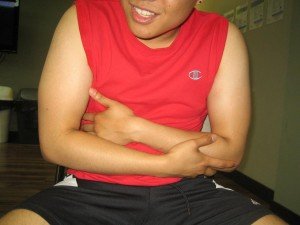Tennis elbow is considered one of the common conditions that can be excruciatingly painful. This occurs when there is damage to the tendons, muscles and ligaments around the elbow joint and forearm. Small-sized tears known as micro tears develop in the tendons and muscles which control the movement of the forearm.
It results to limited movement, pain and inflammation. The micro tears eventually result to the development of scar tissue and calcium-based deposits. If not treated, the scar tissue along with the calcium deposits will place force over the muscles as well as the nerves, thus disrupting the flow of blood and pinching the nerves which control the forearm muscles.
Causes of tennis elbow
The common cause of tennis elbow is overuse. Any movement or action that places constant and extended strain on the forearm muscles along with lack of rest will strain and overwork the muscles.
There are also various causes such as direct injury, falls or bumps onto the elbow. Incorrect technique will also contribute to the condition. In addition, poor fitness and conditioning are also contributing factors.

Signs and symptoms
It is important to note that pain is the distinctive symptom of tennis elbow. The pain is often experienced on the exterior of the upper forearm but can also occur on any part from the elbow joint up to the wrist.
Stiffness, weakness and a generalized reduction in movement can also occur among those who have tennis elbow. In addition, numbness and tingling can also occur.
Treatment of tennis elbow
Tennis elbow is a soft tissue injury involving the tendons and muscles around the elbow joint. Right after sustaining an injury or at the onset of pain, the RICE method is used. Always remember that the RICE method must be provided during the initial 48-72 hours to achieve the best chance of full recovery.
The next phase of the treatment typically involves physiotherapy methods. The elimination of scar tissue and hastening the healing process of the tendons and muscles is possible with the application of heat and massage. The moment the pain subsides, a rehabilitation program must be started. The objective of the program is to restore the endurance, strength, power and flexibility of the tendons and muscles that are damaged.
Preventive measures
- The individual should perform proper warm-up to prepare the muscles and tendons for activity. Lack of proper warm-up will lead to the tightness and stiffness of the muscles and tendons. As a result, there is limited blood flow to the forearm area which leads to lack of nutrients and oxygen to the muscles.
- Maintain the flexibility of the muscles and tendons in order to prevent strain or sprain injuries. If the muscles and tendons are stiff and tight, they are pushed beyond their natural range of movement.
- Proper conditioning and strengthening of the muscles of the forearm and wrist will prevent the development of tennis elbow.
